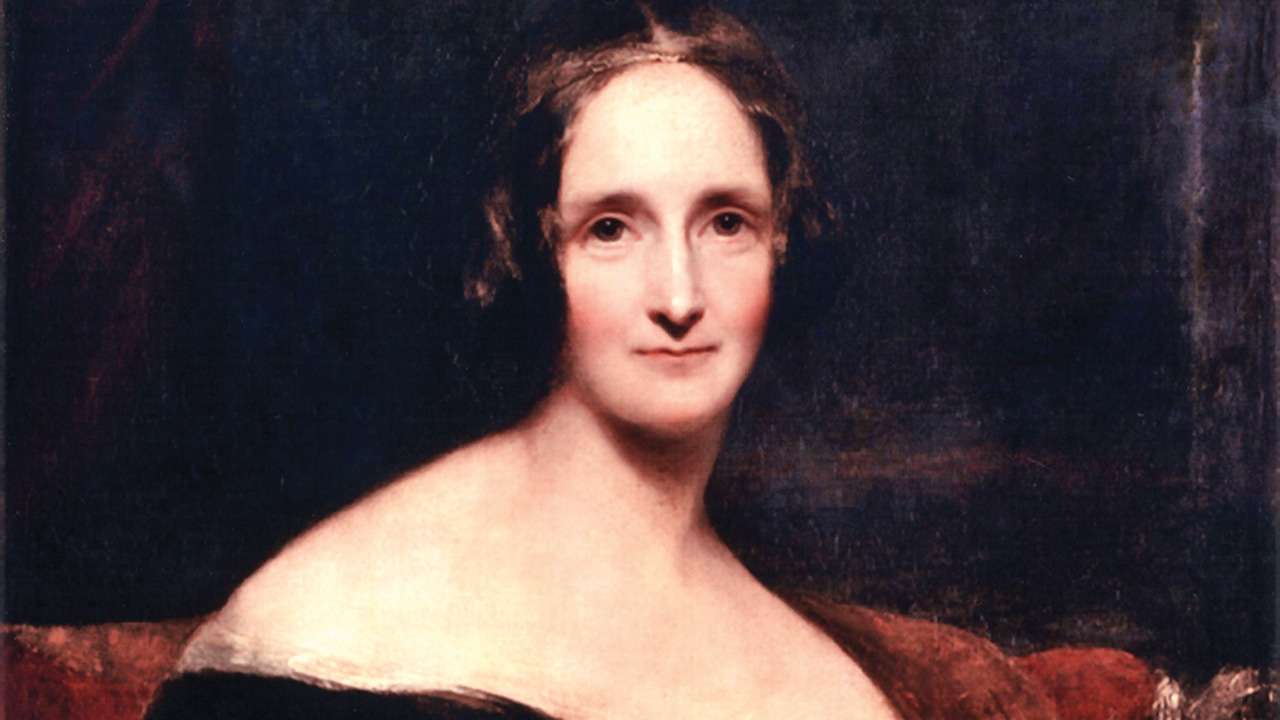
The metaphor of Frankenstein’s monster endures. With the world stepping into a real dialogue with AI on a domestic scale, it was a germ of an idea, no more than fantasy in the 19th century. The gnawing possibility of technology overtaking human provenance has always been a subterranean fear. Sometimes discarded temporarily in the sanguine exultation of new promises of a brave new world, it invariably rears its head again. It is all too real today in the face of ever increasing screen time as it threatens to devour every minute of existence. It is a fear of increasingly losing control. The manipulative ability of science and its related retribution entailed a similar terror for the romantics, finding a high culmination in Frankenstein or Modern Prometheus (1818) by Mary Shelley. And all this in the genre of gothic romance prefiguring science fiction in very real ways.
The book began as a response to a friendly challenge thrown to a group of friends and went on to become an enduring symbol of the fear that plagued the mass imagination about the vile power of science. According to the introductory note of the novel, in the summer of 1816, Mary Shelley and her husband, the poet PB Shelley, on a visit to Geneva, found themselves in the company of Lord Byron. The summer proved “wet and uncongenial” and therefore, they were confined indoors for the most part. To spend these hours, they decided to read and came upon ghost stories translated from German and French. Subsequently, Lord Byron proposed that they each write a ghost story. Mary Shelley could not think of anything worthwhile till she overheard a conversation between the two poets about the experiments being carried out by Dr Erasmus Darwin “who preserved a piece of vermicelli in a glass case till it began to move with voluntary motion”. As a young girl, she had been exposed to new experiments in electricity carried out by Humphrey Davy: Her father had been a supporter of his work throughout. She is said to have read Davy’s papers on Electrochemistry in 1816. These ideas captivated her imagination and soon she was frenetically writing down the story of a “…reanimated corpse…wherein the component parts of a creature might be manufactured, brought together and endued with a vital warmth” (Author’s Introduction Frankenstein).
Frankenstein was thus born in this germ of an idea. The book became iconic in course of time and came to symbolise the consequences of human beings overstepping their bounds. It offered the “most powerful and enduring critique of the male scientific and poetic attempt to appropriate and speak for Mother Nature. Victor Frankenstein’s hubristic effort to have a baby without a woman, to pursue nature ‘to her hiding places’ and steal her reproductive powers, produces not the new species he dreamed but rather a monster who destroys him and his family.” (Anne K Mellor)
This incident also brings out the powerful correspondence between science and literature and how the two were responding to the ripples felt in each other. The terms science and poetry were not as mutually exclusive as we know them today, and as Richard Holmes says, ‘In effect there was Romantic science in the same sense that there is Romantic poetry and often for the same enduring reasons.”
As Holmes argues, the underlying emotion that characterised these times was wonder: A sense of renewed and amazed admiration towards nature. While nature was at the very heart of the Romantic poetic imagination, it was no less so for the men and women of science at this time. There started a lively inspirational exchange between poetry and science, the two fields traversing each other rather unapologetically. As an illustration, Erasmus Darwin, botanist and amateur experimentalist and country doctor, versified science in his two-part poem The Botanic Garden (1791). It was a fascinating compendium of rhyming couplets through which he expounded on the Botanist Carl Linnaeus’ classificatory system for plants. He also talked about evolution as a principle, which was to come in full flower through the work of his grandson, Charles Darwin. Mary Shelley and PB Shelley sought inspiration from his work and the “underlying idea of one life within us and abroad”. Shelley was to explore this idea in his poem The Sensitive Plant. These could interestingly be seen as forerunners of a similar claim made more than a century later by Jagadis Chander Bose, an Indian scientist who demonstrated through his experiments in 1906, that there are similar nerve centres in plants as in humans, making the startling claim that the “conduct of excitation in plants is fundamentally the same as animals”.
So, this is a tiny tale of science and poetry commingling, of human tendencies and fears, of the extraneous taking on the “human”, of intelligence fashioning monstrosity.
Author teaches English Literature